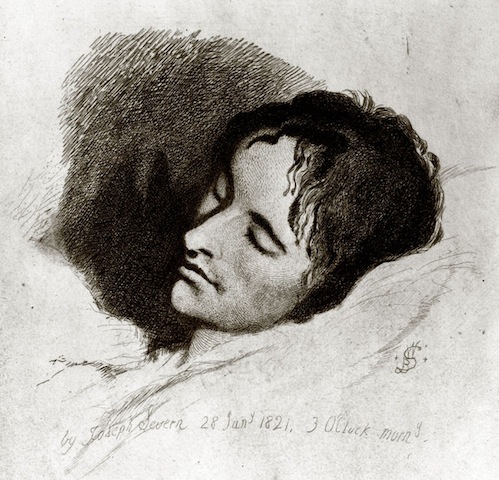The day we learn Kate Spade took her life we are in Rivella, Italy, a small town on the Amalfi Coast—it finds us even in this small corner of the world, stamped on the front page of the International Times and in international papers that line the table where we breakfast.
The reporting is invasive and crude. Lines from Kate Spade’s suicide note, the last words to her daughter are printed worldwide. Speculation and implication of marital troubles at the bottom of it. Next news cycle. Kate Spade’s sister speaks out, saying that she was not surprised; Kate had suffered from bipolar depression but was afraid to get treatment lest the news break out. A life comes to a tragic end reduced by simplistic statements.
After breakfast, our plan is to tour the Villa Cimbrone. In Roman times, the brochure of the walking tour tells us, Villa Cimbrone was an agricultural estate that produced timber for naval use. At the end of the nineteenth century it was abandoned and later rediscovered by an English traveler, Ernest William Beckett, Lord Grimthorpe. He was a member of the group of intellectuals who made the grand tour to Ravello. His personal mission was to recuperate from a deep depression after the death of his beloved wife. The beauty of the estate, the joy it brought, led him to buy it in 1904, to restore it and transform it into his own artful creation. The estate became an elegy to his lost wife; a place where he could honor his grief and preserve her memory with its austerel beauty. Carved into the wall of a stone bench are these words:
LOST TO A WORLD IN WHICH I CRAVE NO PART
I SIT ALONE AND COMMUNE WITH MY HEART
PLEASED WITH MY LITTLE CORNER OF THE EARTH
GLAD THAT I CAME NOT SORRY TO DEPART.
I’m drunk by the overpowering scent of flowers in the many gardens, along trellises and walls, by the views of the lemon groves and the Mediterranean, dust from the antiquated stones and walkways, by the history of this place embedded in every stone and wall and the ghosts of suicides that in this particular moment are unleashed.
We walk along a path called the Avenue of Immensity. In different parts of the estate are statues of the Greek and Roman gods, Cere, Mercury, Diana, and the Temple of Bacchus, where Lord Grimthorpe requested his own ashes be buried. We follow the map to the the Terrace of Infinity that overlooks the expansive sea. It is lined with eighteenth-century marble busts and from here you can see the coast of Amalfi, the past and the present colliding in its majesty. This is where the sea and the sky feel all of one, where heaven and hell might meet. No better place to honor the dead.
Two days later, we are in Rome, having awoken to the news of Anthony Bourdain’s suicide. Because I am a writer and an editor, my newsfeed is filled with remembrances from chefs, journalists, editors and writers; the owner of the deli counter Bourdain frequented has left a seat empty for him with his usual breakfast order of scrambled eggs and Nova Scotia lox, Anderson Cooper is reduced to tears on CNN. Universal mourning for a man who brought the world to his viewers through his television show about his travels to remote places, Parts Unknown, a title that takes on a deeper resonance after the news of his death. And still, the airways reverberate with one thought: Why?
We are only in Rome for a day. Our mission is to go to the Trevi Fountain, the Pantheon and then the Spanish Steps. As we enter the square of the Spanish Steps my eye catches on a plaque, THE KEATS-SHELLEY MEMORIAL HOUSE. I knew that the house was in Rome, but I hadn’t thought about it on this trip. We ditch the massive crowd at the Spanish Steps and walk up the stairs to the second floor of the house. It’s in the foreigner’s quarter of Piazza di Spagna. This is the house where Keats and his friend and painter Joseph Severn found rooms in November 1820, Keats at the last stages of tuberculosis. When he grew too ill to leave his room, the view from his window was, according to The Keats-Shelley House: A Guide, a “constant distraction and delight.”
We enter Keats’s room, where this great poet spent the remaining days of his life at the age of twenty-five. He died on February 23, 1821. Narrow and long, its walls are painted the beautiful blue of the shutters that line many of the windows along the streets of Rome. Against one wall is a narrow boat bed, once called a fainting couch, and a bureau and a chair where Severn sat to nurse Keats as he passed. These were his last words to Severn: “Lift me up for I am dying—I shall die easy—don’t be frightened—thank God it has come.”
We look at the letters and snippets of poems preserved under glass at the museum, the living mask and the death mask taken of Keats after his death. In one of the letters are these words from Severn to Charles Brown, another close mutual friend of his and Keats’s, dated December 17, 1820.
“Oh he will mourn over every circumstance to me whilst I cool his burning forehead—until I tremble through every vein in concealing my fears from his staring glossy eyes—how he can be Keats again from all this I have little hope.”
“How he can be Keats again.” The phrase is both profound and haunting. It takes on deeper resonance in the aftermath of the two suicides of public figures, one I knew only through her designer handbags and one I had met once at a publication party at the Spotted Pig, a restaurant in Greenwich Village, that he hosted for a novelist I had published. Substitute any name in that phrase: How she can be … again; how he can be … again. It commemorates the essence or soul of the one we survive.
On average, 123 suicides occur each day, if not more, because many suicides, due to stigma, are not reported. In some religions, suicides are not mourned, nor is the person permitted entrance to heaven. Suicide becomes part of the national and international discourse after a celebrity takes his or her own life (remember, more recently, Robin Williams) as if those lives are more important or valued than the other 123 who die every day. Why the disbelief? Why the sudden attention to a disease that has plagued humanity since the beginning of humanity? We all wear our own masks, whether or not we’re celebrities.
We must not judge those who take their life. Nor speculate on what we cannot know. We must not delude ourselves that we can understand the suicidal mind. We live in a moment of self-help books, life coaches, therapists, acupuncturists, herbalists, spiritual retreats and remedies, all designed to quell the chaotic soul and delude us into thinking we are inured to the depths and rivulets of where the mind can descend or land upon when one is ill. Let’s not glamorize suicide or reduce it to simplistic scenarios, a broken heart, loneliness, addiction, marital troubles. Let’s accept that the mind is fragile and mysterious and that we can’t fully know what another person is thinking or feeling or what past traumas haunt and resurface in any moment. The mind is a powerful engine, even of destruction. We must sensitize ourselves to its power.
Suicidal thoughts are symptoms of a disease (as all mental illnesses) that spreads through the mind like a cancer until finally even living, at least for that moment, feels unbearable. Instead of glamorizing, let’s devote more of our discourse and research into understanding ways to prevent it. Let’s allow those who’ve commited suicides to be themselves and not forever colored by their last impulsive act.
In the house where Keats spent his last days there is a drawing his friend Severn made of him on his deathbed. His head is propped against his pillow and turned to its side so that we can see the soft peacefulness in his face. His eyes are closed and he is dressed in a white gown. Perhaps in the hours in which Severn, dear friend, sketched his portrait, Keats was thinking of his circle of friends, his family, his brother and mother already gone from the illness, his beloved Fanny Brawne to whom he was engaged before his trip, his love letters to her now immortalized. Perhaps he listened to the birds outside his window, horse hoofs along the cobble steps, smelled wafts of honeysuckle in the wind, wishing for more life.
As the tuberculous spread through his body and he became more infirm, Keats was aware he was dying. In this prophetic sonnet “To Sleep,” he immortalizes his own death.
O soft embalmer of the still midnight,
Shutting with careful fingers and benign,
Our gloom-pleas’d eyes, embower’d from the light,
Enshaded in a forgetfulness divine:
O soothesest sleep! If so it pleases thee, close
In midst of this thine hymn my willing eyes,
Or wait the amen, ere they poppy throws
Around my bed its lulling charities.
Then save me, or the passed day will shine
Upon my pillow breeding many woes,—
Save me from the curious Conscience, that still lords
Its strength for darkness, burrowing like a mole;
Turn the key deftly in the oiled wards,
And seal the hushed Casket of my Soul.
“Save me from the curious Conscience, that still lords / Its strength for darkness, burrowing like a mole” is no less a truer description of the suicidal mind eating away at itself. In the last two lines of the sonnet, the poem turns to a place of acceptance. The poet is allowed to have his dignity sealed in the “hushed Casket” of his soul, as all those we lose, no matter how we lose them, must.
Jill Bialosky is the author of the New York Times best-selling book History of a Suicide: My Sister’s Unfinished Life.
from The Paris Review https://ift.tt/2MpmQ1u


Comments
Post a Comment